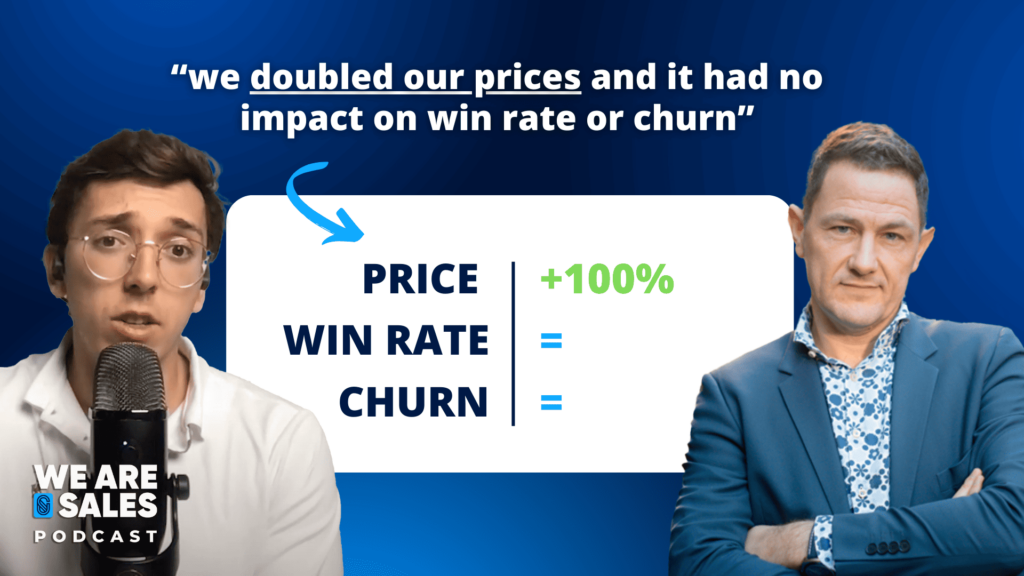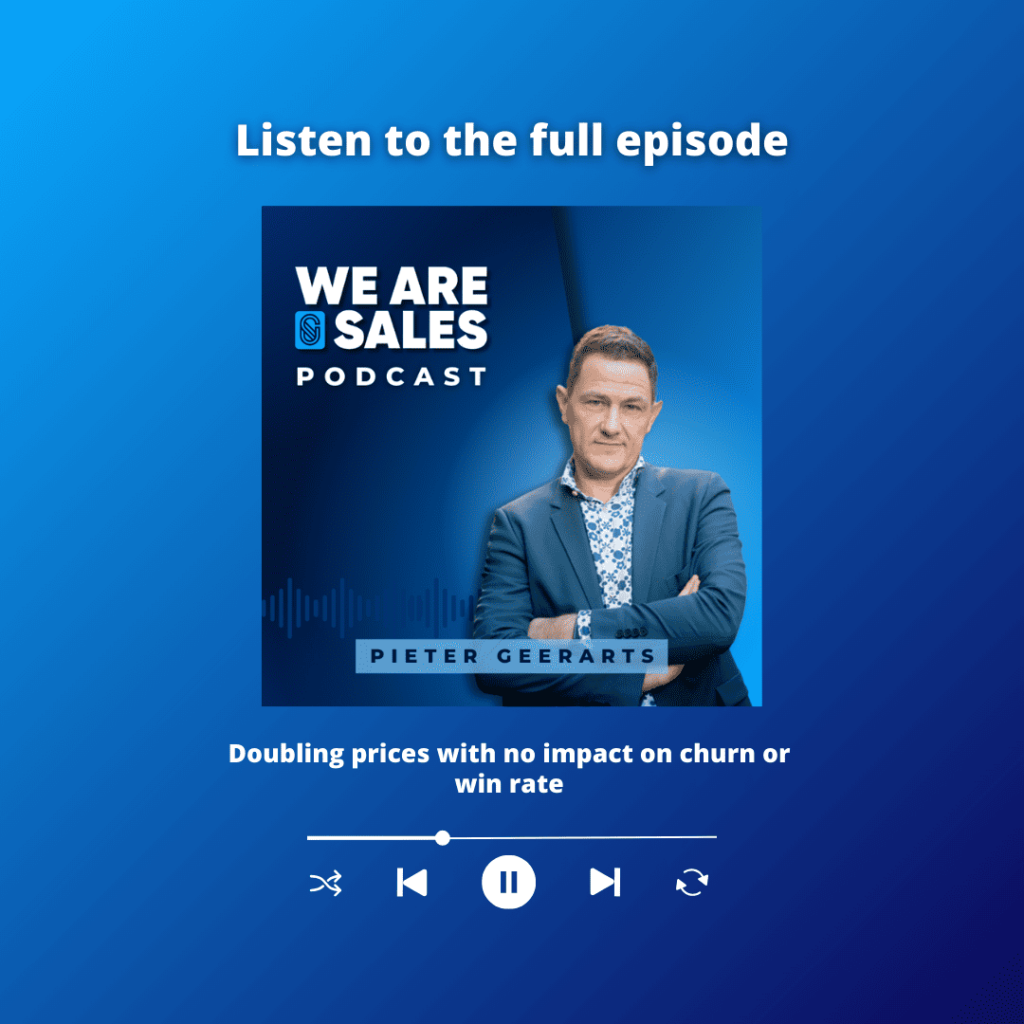Share:
Losing €2.2M because of wrong pricing

Imagine winning a deal but feeling like this:
“It felt like we lost €2.2 million”
Let me give you more context:
“One day we won a deal of €300k. Later, I heard that the customer almost went with the competitor that had their prices set 10x higher. However, we also heard that the price was not among their top 5 reasons for choosing us. That’s when I realized that, yes, we won the deal, but it felt like we lost €2.2 million.”
Meet Pieter Geeraerts, an experienced CEO/CRO, who has contributed to the growth journeys at Expensya, MobilExpense and Isabel Group, to name a few.
In this week’s CRO interview we talked about pricing and value selling.
“If there are too few objections on price, then you need to start to worry”.
Please listen to our interview with Pieter here, or read along to learn about Pieter’s approach in raising prices.
Want more articles like this one directly in your mailbox?
Step #1 – Know your customer
You could have guessed it, but determining the right price starts by having a deep understanding of the customer. This is how Pieter has approached this in the past:
We conducted interviews with our customers and asked them three things. First, we asked them to provide a list of the elements that influenced their decision to choose a vendor. Second, we asked them to assign a weight to each criterion. Third, we asked them to rate how well or poorly we performed for each element.
This way Pieter gained insights in (1) what the customers valued most and (2) what their perceived unique selling points were.
If we had a budget for a more comprehensive analysis, we would hire a team of consultants to perform it. They are impartial evaluators in the eyes of the customers. This would make customers more inclined to be even more honest and transparent.
I have done this a couple of times by now and pricing has never been in the top 5.
Armed with the gathered insights, it’s time to determine the actual value of our offering. That way we can price our solution based on that value.
Step #2 – Determine the value
Pieter’s go-to method is to develop a Business Case. It can be as simple as an Excel template that needs to be completed.
To build that template, four aspects are required:
- Add the criteria that are relevant to the average customer to the template (e.g. work faster)
- Translate “features” to “customer benefits” (e.g. work faster > more orders processed / time)
- Quantify these benefits (e.g. per extra order processed > + €100)
- Know the impact of your solution (e.g. after implementation > +2 orders processed / day > + €200 / day)
Note: You cannot build this effectively without having customer use cases, where there is a snapshot of the before and after situation. For that reason, Pieter insisted to make this part of every agreement when closing new customers.
That business case should quantify the expected ROI. So it should compare the investment of your solution vs. the increase in revenue and/or decrease in cost thanks to your solution.
I always try to determine: what’s the ROI after 3 years and what’s the payback time?
Once this business case template has been built, the sales team can now approach prospects with it:
You make the business case for the customer. If you are really not sure of the parameters, it’s simple. You just say “hey- I think this is your business case”. You will quickly hear what’s right and what’s not. Be aware, the customer will probably exaggerate a little bit in their favour. That’s part of the game.
Once the value has been quantified, it might become apparent that prices were set too low. If that’s the case, it’s time to move on to step #3.
Step #3 – Test higher price
Even though it might make sense on paper, the reality has to be observed in the market. That’s why Pieter would not recommend to go for a Big Bang, but test higher prices gradually:
One of the companies I joined was selling in Germany. I was familiar with the market due to past experience, and I strongly believed that we could increase the implementation cost by 50%. The initial fee was €1000 per day. However, the rest of the team was sceptical about raising the price. So, I proposed that we test it. First, we raised the price from €1000 to €1200, and it proved successful. Then, I pushed it further, going from €1200 to €1300, and once again from €1300 to €1400. And what do you know? The sales team independently increased it further to €1500.
Step #4 – Educate the sales team
Interestingly, the most significant challenge in raising prices doesn’t stem from customers’ willingness to pay more; it arises from the sales team’s limitations due to their belief system.
Every time I planned to raise our prices, I got pushbacks. The sales team revolted with phrases like “we are going to lose all our deals now”.
Pieter shared three tips to overcome this:
(1) As said in Step #3, gradually increase prices. If a smaller price increase gets rewarded with a win, they are more likely to repeat another price increase.
(2) Lead by example. You – as the CRO/CEO – might need to create evidence that it is possible to sell at higher prices by actually doing it. If you can do it, why couldn’t they?
(3) Help them see the value of this change is for them. For example, instead of having to sign 10 deals with the old prices, with the new prices, they only need to sign 6 new clients.
Next to correcting the belief system of the sales team, some people might also need to be trained on value selling.
When I hear reps bring up the price without building up value, I know there is something to work on. Luckily, value selling is a performance that can be coached.
That’s where having a strong Sales Enablement process in place can make all the difference.
Want more? Listen to the full interview here 👉 🎙Doubling prices with no impact on churn or win rate

